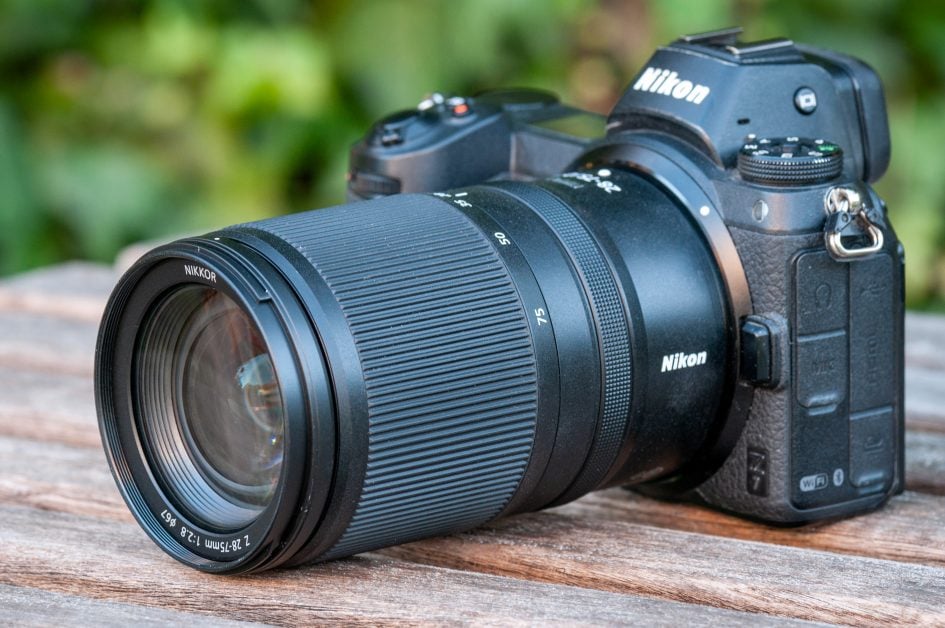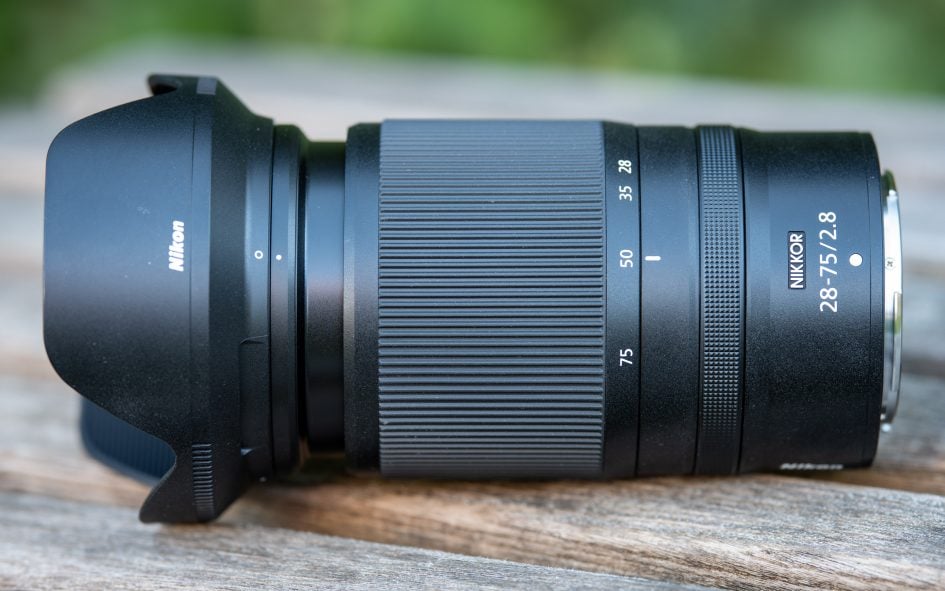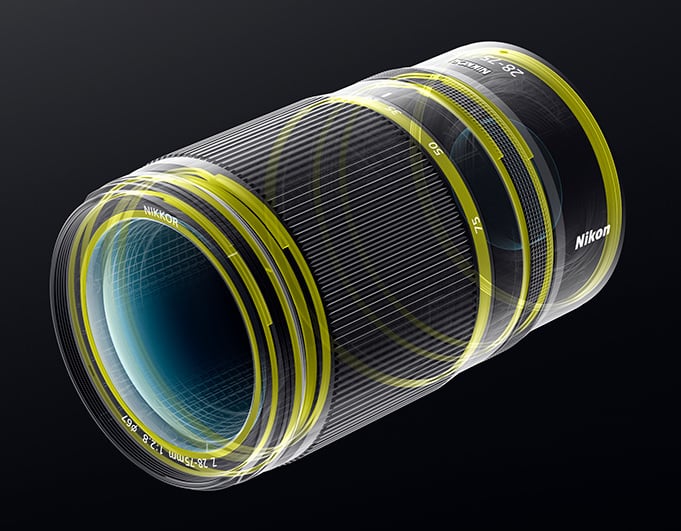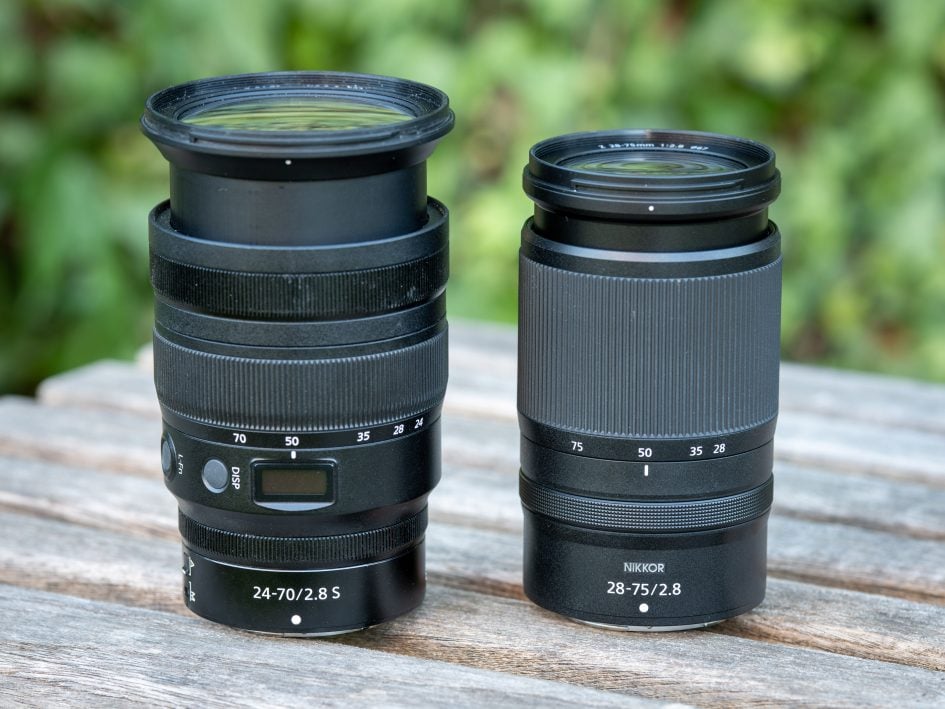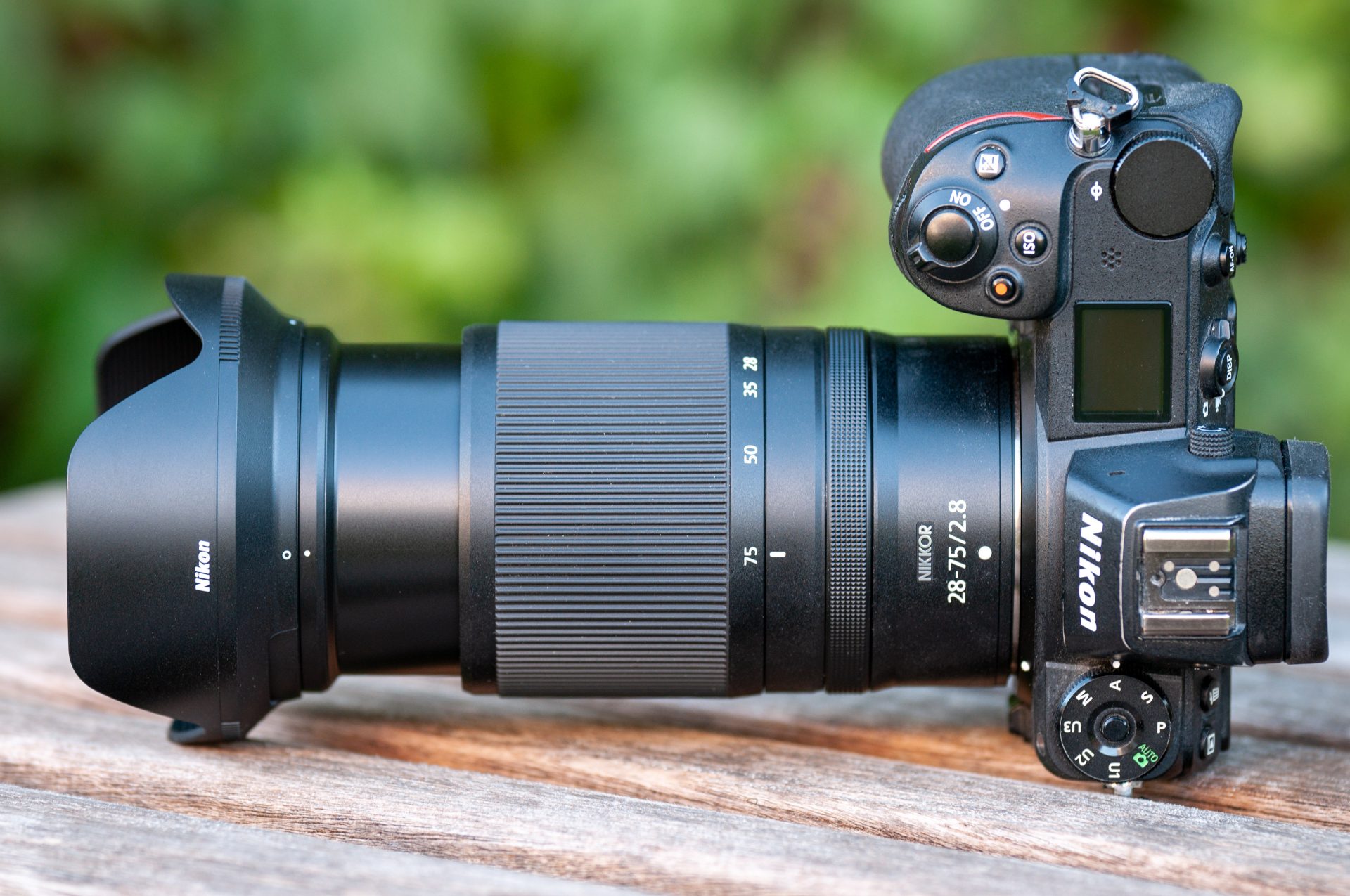Nikon Z 28-75mm f2.8 review
-
-
Written by Thomas
Intro
The announcement of Nikon’s Z 28-75mm f2.8 came as quite a surprise: it was neither on Nikon’s lens roadmap nor were there any rumors about it until a few days before it became official. In addition, Nikon already has two standard 24-70mm zooms for its mirrorless lineup: The Z 24-70mm f4 S and the Z 24-70mm f2.8 S. But Nikon managed to squeeze another interesting option between both existing lenses: The Z 28-75mm f2.8 offers a one stop brighter constant focal ratio than the 24-70mm f4 S but does away with the top-of-the-line features of the professional grade Z 24-70mm f2.8 S. The new lens has no dedicated focus ring, no programmable function button, no OLED display, and no ARNEO coating. And – perhaps most crucially – it starts at only 28mm, which means you lose 9 degrees in angle of view over the lenses starting at 24mm. It’s also not an “S”-lens signalling that its optical performance is probably not quite up there with Nikon’s “S”-lenses. But sacrificing these features makes it possible to position the new lens at half the price of the Z 24-70mm f2.8 S and quite astonishingly shave off an incredible 30% or 241g of weight of its professional sibling. Which makes the Nikon Z 28-75mm f2.8 the lightest standard zoom lens with constant f2.8 aperture for mirrorless cameras, except for the Tamron 28-75mm f.8 Di III G2 which recently hit the streets – but is only available (so far) for Sony E-mount. Speaking of the Tamron, the Nikon 28-75 also bears more than a passing resemblance to the original G1I version of that lens, so let’s investigate further in my full review!
The Nikon Z 28-75mm f2.8 is made in China and costs 990 EUR / 1197 USD / 949 GBP.
Facts and features
Let’s compare the Nikon Z 28-75mm f2.8 (“Z 28-75” for short) to the Nikon Z 24-70mm f4 S and Nikon Z 24-70mm f2.8 S. I also put in the Tamron 28-75mm f2.8 Di III (1st generation, “Tamron G1” for short) which is only available for Sony E-mount but that lens looks very similar in construction and MTF performance to the new Nikon. As usual I’ve rated the features with a [+] (or [++]), when it’s better than average or even state of the art, a [0] if it’s standard or just average, and [-] if there’s a disadvantage.
Size (diameter x length): 75 x 121mm (3.0 x 4.7in.) plus 37mm for the lens hood (97mm diameter) plus 25mm when zoomed in to 75mm focal length. Nikon implemented a single barrel design just like on the Z 24-70mm f2.8 S. The Z 24-70mm f4 S is 78 x 88mm (in its collapsed state) + 41mm lens hood + 50mm extension when zoom-in. The Z 24-70mm f2.8 S is 89 x 126mm + 41mm lens hood + 30mm when zoomed in, the Tamron G1 is 73 x 118 + 27mm lens hood + 25mm when zoomed in. When comparing the Tamron G1 with the Z 28-75 keep in mind that the flange distance for Z-mount is 2mm shorter than for E-mount. [0]
Weight: At 565g (1.25 lb.) plus 25g for the plastic lens hood the new lens is astonishingly light for a constant f2.8 zoom. The Z 24-70mm f4 S is 497g + 28g lens hood, the Z 24-70mm f2.8 S is 806g + 43g lens hood. The Tamron G1 is 540g + 25g lens hood. [+]
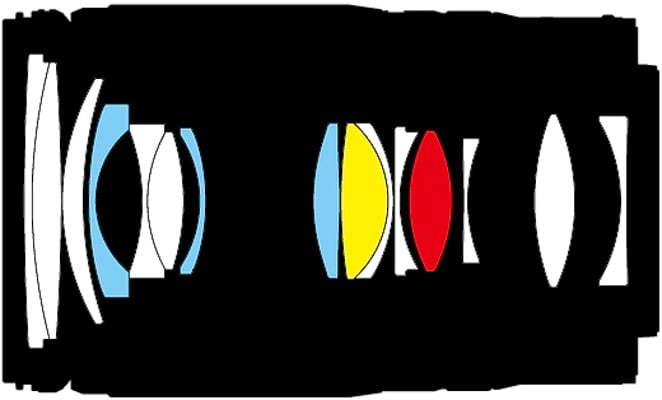
Above: Nikon Z 28-75mm f2.8; below: Tamron 28-75mm f2.8 Di III (1st generation)
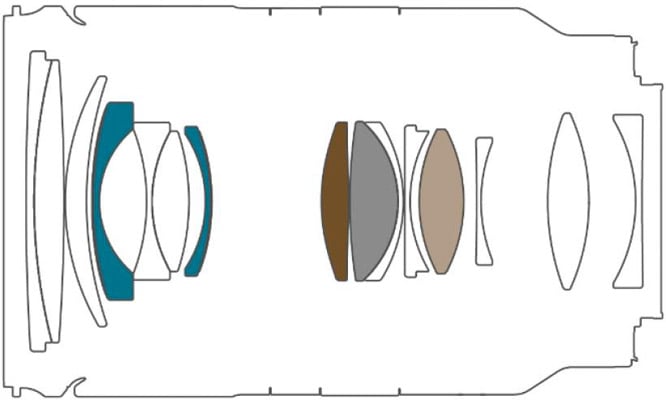
Optics: with 15 elements in 12 groups including 2 special dispersion and 3 aspherical elements the construction looks identical to the Tamron G1. The three Nikon lenses in this comparison have fluorine-coating on the front element to repel water, dust, and dirt and make cleaning easier. The Z 24-70mm f4 S has 14 elements in 11 groups, the Z 24-70mm f2.8 S has 17 elements in 15 groups including three aspherical elements and profits from Nikon’s “ARNEO” anti-reflective coating. [+]
Closest focus distance of the Z 28-75 is 0.19m (0.6ft.) with a working distance of only 5cm (2.1in.) at 28mm focal length, 0.37m (1.2ft.) at 75mm focal length with a working distance of 20cm. Maximum magnification is 1:2.9 at 28mm focal length and 1:3.4 at 75mm focal length which is quite good and a tad more than from the Tamron G1. The Z 24-70mm f4 S goes to 1:3.1, the Z 24-70mm f2.8 S achieves 1:4.2, both at 70mm focal length. [+]
Image stabilization: No. All lenses in this comparison rely solely on the body-based stabilization on Nikon’s full-frame Z cameras. [0]
Filter-thread: The Z 28-75 uses 67mm filters, the Z 24-70mm f4 S uses 72mm filters, the Z 24-70mm f2.8 S needs 82mm filters [+]
Autofocus: Yes with built-in AF drive. Manual-focus override is by simply turning the multi function ring – if you have focus assigned to it. The ring has a variable gearing (like Nikon’s other AF Z-Nikkors) which allows for very precise manual focus when turned slowly but cannot be switched to linear gearing. Which makes smooth focus pulling for videographers almost impossible. On Nikon Z cameras introduced October 2020 or later you can reverse focus direction. [+]
Aperture ring and other control elements: the multi-function control ring of the Z 28-75 and Z 24-70mm f4 S can be assigned to operate the aperture (which is the default), exposure compensation, ISO sensitivity, or focus – or simply switched off. As these two lenses lack a dedicated focus ring the multi-function ring automatically falls back to its customary focus control when the camera is switched to manual focus. The Z 28-75 lacks an AF/MF switch witch both the 24-70mm zoom lenses have. The Z 24-70mm f2.8 S also sports an OLED display indicating focal length, aperture or focusing distance (in m or ft.) and depth-of-field plus an extra function button which can be assigned different functions e.g. AE/AF-lock. The Tamron G1 simply has a dedicated focus ring and no other control elements. [+]
Lens profile: All three Z-Nikkors come with a lens profile for vignette control, diffraction compensation, and auto distortion control. The latter can be deactivated – except on the Z 24-70mm f4 S. [+]
All lenses in this comparison cover full frame/FX or smaller sensors. [+]
Price: 990 EUR (incl. 19% VAT) / 1197 USD / 949 GBP. The Z 24-70mm f4 S is currently at around 650 EUR / 1000 USD / 800 GBP, the Nikon Z 24-70mm f2.8 S costs 2000 EUR / 2000 USD / 2000 GBP. This makes the Z 28-75 looks like a bargain if you want/need a standard zoom lens with a constant bright f2.8 focal ratio. So relative to the other two Z Nikkors the new lens seems attractively priced. The Tamron 28-75mm f2.8 Di III (1st generation) is still available in some shops at street prices of around 670 EUR / 630 GBP while Tamron’s new and improved 28-75mm f2.8 Di III G2 costs 949 EUR / 899 USD / 849 GBP – but both Tamron lenses are only available for Sony E-mount. [+]
All three Z-Nikkors come with the usual flimsy pouch with no strings to pull it close. The lens hood is included and is reversible for transport. The lens hood of the Z 24-70mm f2.8 S has a lock to prevent it from accidentally falling off. [0]
Sealing: All three Z-Nikkors have a rubber grommet at the lens-mount plus further special weather-sealing throughout the construction. The Tamron G1 has only a seal at the lens mount. [+]
At a score of 0[-]/3[0]/10[+] the Nikon Z 28-75mm f2.8 offers a good feature set including full weather sealing, fluorine-coating, multi function ring, and most crucially a low weight and very reasonable price. The only really critical point may be that the zoom starts at 28mm which gives a 9 degrees narrower angle of view than lenses starting at 24mm. But all-in-all I think Nikon has put a very interesting proposition in the market.
Two standard zoom lenses for Nikon Z mount
Above: Nikon Z 24-70mm f2.8 S (left), Nikon Z 28-75mm f2.8 (right)
Coverage
With its 2.7x zoom-range the Z 28-75 starts at the short end with an angle of view of 75 degrees, compared to the 84 degrees of zooms starting at 24mm. The difference doesn’t look like much but I wouldn’t underestimate it: Not always can you step back enough to get the 9 degrees wider view of 24mm focal length. At the long end the Z 28-75mm offers 7% more reach/magnification than 70mm focal length which is only a minor benefit: If the image at 70mm is sharp enough, cropping a 45MP shot at 70mm to match the angle-of-view of 75mm still nets you around 39MP.
Here is the angle of view that the Z 28-75mm zoom lens covers compared to the coverage of a 24-70mm zoom both shot from the same spot. The difference at the wide end is clearly visible:
Above: Nikon Z 28-75mm f2.8 coverage on full-frame camera at 28mm (left) and 75mm (right), auto distortion control = ON
Above: Nikon Z 24-75mm f2.8 S coverage on full-frame camera at 24mm (left) and 70mm (right), auto distortion control = ON
Focus and zoom
Focus accuracy and repeatability is critical to consistently produce sharp shots. Repeatability (the accuracy of focus on the same subject after repeated focus-acquisition) of the Nikon Z 28-75mm f2.8 is very good (measured 99.3% in Reikan FoCal) with no outliers over a series of 40 shots on the well lit and contrasty focus test target. And there is almost no focus variation whether the lens focuses from a closer distance or from infinity. At 70mm focal length the lens focuses in around 0.5 sec from infinity to 0.85m (1:10 magnification).
The zoom ring has a pretty short throw of about 60 degrees. It has a 46mm wide rubber surface with a good grip and turns with quite some resistance. It can hardly be operated with one finger but the lens still shows a bit of zoom creep. The lens control ring is 8mm wide and is located closer to the camera. It has a knurled metal surface, moves smoothly albeit a bit stiffer than on earlier Z-Nikkors. But it still can easily be operated even with your pinky.
AF-operation of the Nikon Z 28-75 is very quiet if you record video with the built-in microphone. In photo mode you can hear a very faint noise from the outside.
As you pull focus, you’ll notice very little focus breathing: When I adjusted the focus from infinity to 0.85m at 75mm focal length, I measured a 3% increase in magnification. This is hardly noticeable. Same at 28mm focal length.
I also tested whether Nikon’s zoom lens allows you to change the focal length without altering its focus. This characteristic is called parfocal. I focused the lens at 75mm and then slowly zoomed back checking focus on the way. The Nikon Z 28-75mm f2.8 did not keep its focus perfectly. It’s not a huge deviation but enough to be seen even at only 50% magnification or a 4k image/video recording.
Next check out my quality results!
Check prices on the Nikon Z 28-75mm f2.8 at B&H, Adorama, WEX UK or Calumet.de. Alternatively get yourself a copy of my In Camera book or treat me to a coffee! Thanks!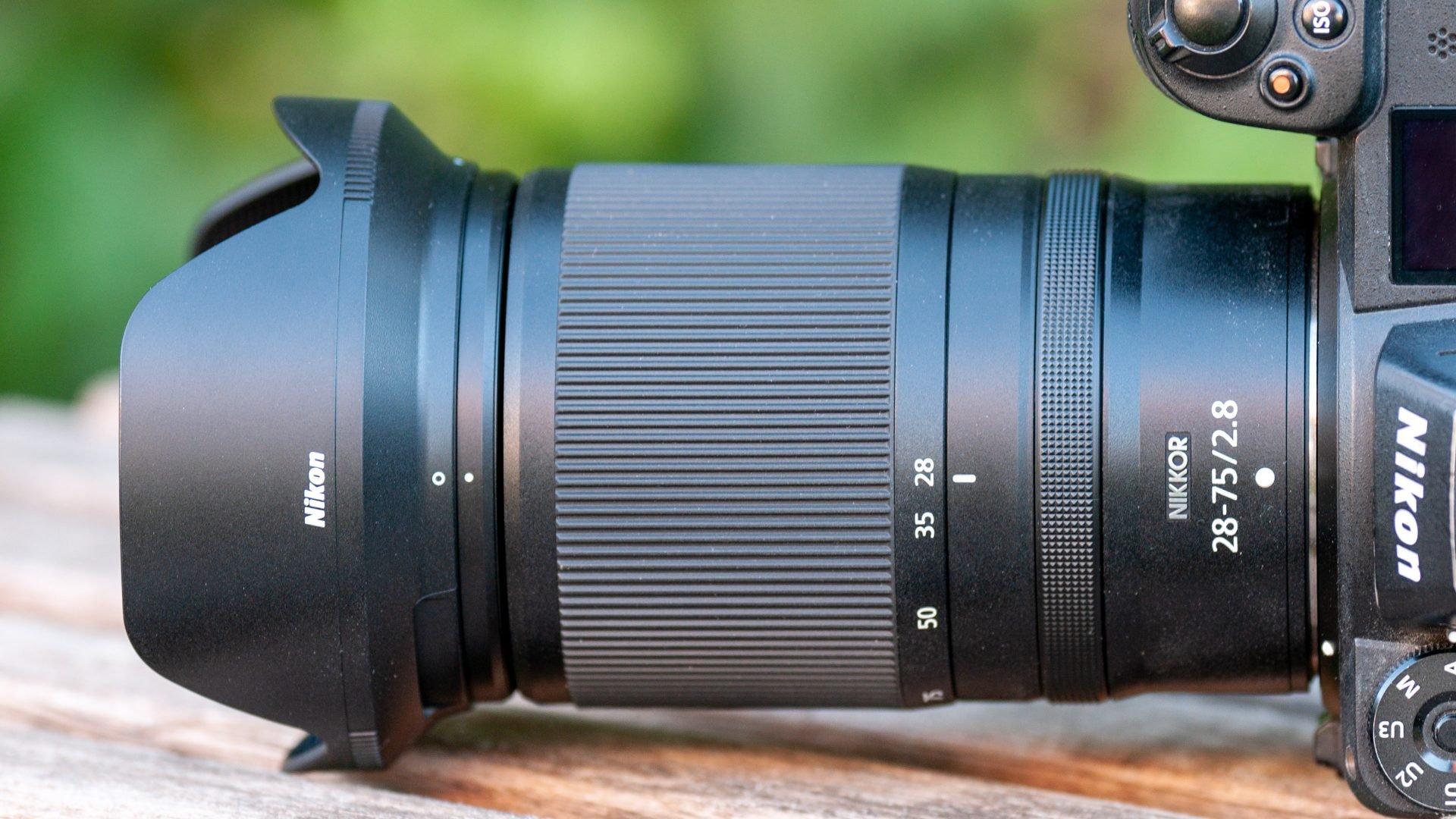
 The Nikon Z 28-75mm f2.8 is a valuable addition to Nikon's Z-Mount line-up, that’s wisely pitched between their entry-level Z 24-70mm f4 S kit zoom and the high-end Z 24-70mm f2.8 S. The new lens can keep up with its older siblings in the DX image-circle and delivers very usable close-up performance too. It’s small and light and comes at a reasonable price that makes it a viable option for those who can only dream of f2.8 zooms and were otherwise heading to the budget kit lens. For the price, the sharpness unsurprisingly becomes softer in the full-frame corners and many will miss the wider coverage of zooms that start at 24mm; there’s also some irritating flare and ghosting under certain circumstances. I also wonder, since the lens is clearly based on the Tamron 28-75mm f2.8, why didn't Nikon use the optical design of the latest 2nd generation (G2) version which recently hit the streets and is a clear improvement over their G1 design? But all-in-all the Nikon Z 28-75mm f2.8 is an attractive option for Z-mount owners and I’m happy to award Nikon’s new standard zoom lens a recommendation!
The Nikon Z 28-75mm f2.8 is a valuable addition to Nikon's Z-Mount line-up, that’s wisely pitched between their entry-level Z 24-70mm f4 S kit zoom and the high-end Z 24-70mm f2.8 S. The new lens can keep up with its older siblings in the DX image-circle and delivers very usable close-up performance too. It’s small and light and comes at a reasonable price that makes it a viable option for those who can only dream of f2.8 zooms and were otherwise heading to the budget kit lens. For the price, the sharpness unsurprisingly becomes softer in the full-frame corners and many will miss the wider coverage of zooms that start at 24mm; there’s also some irritating flare and ghosting under certain circumstances. I also wonder, since the lens is clearly based on the Tamron 28-75mm f2.8, why didn't Nikon use the optical design of the latest 2nd generation (G2) version which recently hit the streets and is a clear improvement over their G1 design? But all-in-all the Nikon Z 28-75mm f2.8 is an attractive option for Z-mount owners and I’m happy to award Nikon’s new standard zoom lens a recommendation!